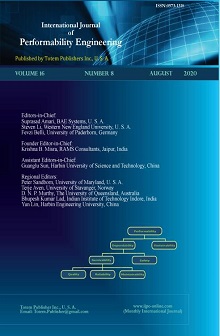-
Simulation for Target Detection in Polarimetric Scenes
- Junhua Yue and Yan Li
-
2020, 16(8):
1310-1320.
doi:10.23940/ijpe.20.08.p18.13101320
-
 Abstract
Abstract
 PDF (694KB)
PDF (694KB)

-
References |
Related Articles
Aiming to precisely detect targets in complex scenes using optical remote sensing technology, the technology of modeling and simulation for polarimetric detection on remotely-sensed targets is discussed. Due to the complex interference between targets, background reflection, and aerosol radiation in real environments, the modeling and simulation of polarimetric targets are difficult. Firstly, the optical theories and basics of polarimetric model are introduced, and then a numerical simulation and analysis for Priest-Germer model are given. The Priest-Germer model obtains different results for different materials and is capable of distinguishing materials. The design idea and software frame of polarimetric detection software are provided. Finally, giving two kinds of material and two wavelength irradiation (440nm, 600nm), four groups of simulation experiments for two targets and polarimetric image histogram comparison are exhibited. The derived results prove that polarimetric simulation software based on PG model is sensitive to different targets, irradiation, and materials and provides distinguishing ability. The visualization effects are relatively good, the software has great values on practice, and it is shown that the target model, atmospheric transmission model, and physical property of materials have comprehensive and decisive effects on polarimetric imaging.

